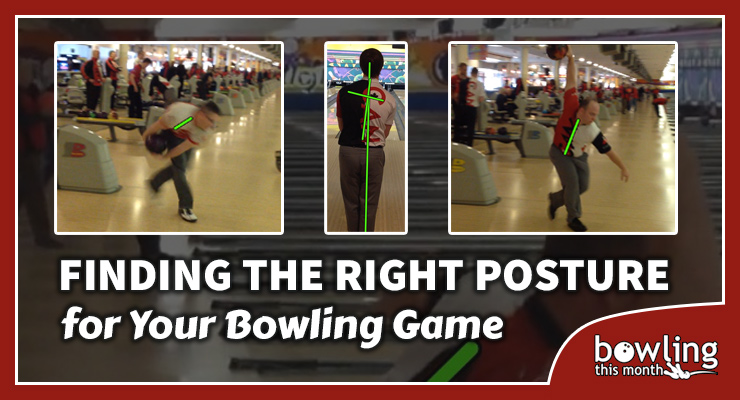Article Contents
- 1. Creating an efficient body position
- 2. Finding postural stability
- 3. What’s best for me?
- 3.1. Am I in any pain?
- 3.2. How high is (or, how high do I want) my backswing?
- 3.3. How flexible am I?
- 3.4. How strong am I?
Note: This article is only available to Bowling This Month subscribers.
When it comes to the technical side of bowling, the release and the armswing are the glamorous pieces that everyone wants to look good, the footwork is the workhorse that people recognize as being very important, and the core and posture are often the black sheep. Since this is also the element that seems to vary most among professional and world-class bowlers, it’s hard to really pinpoint what constitutes good posture.
Many people assume that good footwork and a good swing are all you really need, but your posture and the use of your core are essential parts of being efficient and effective in your delivery. For this reason, posture is the seventh and final topic of my Seven Common Problems… series.
(Editor’s note: This article is the final installment of Tyrel’s Seven Common Problems That Can Hurt Your Bowling Scores series. To read the other articles in this series, please click the following links: Part 1, Part 2, Part 3, Part 4, Part 5, Part 6, and Part 7.)
Creating an efficient body position
Many of my articles refer to being efficient in creating and transferring energy to the ball. Your core is a key part of this process. If you think of the energy you are generating during your approach as a train, there is a point at which the energy has to switch tracks from your legs to your arms. Your core is the switch. If the switch isn’t working, the train’s energy gets stopped abruptly, resulting in a derailment. In the case of a human energy derailment, the result is usually some kind of injury in the joints (often the hip or lower back), because that energy has to be absorbed somewhere if it fails to continue through to the arm and into the ball.
Your posture needs to allow for the energy to be created and then transferred through the release point. How much energy you create—and how involved your core needs to be—will depend on two things:
- your body type and overall strength, and
- your flexibility.
Your size and strength will impact how much you really need to open up your core in order to generate power. Rotating your core a full 90 degrees so that your shoulders are parallel to the boards is essentially considered the ideal. What is commonly ...
Already a premium member? Click here to log in.


